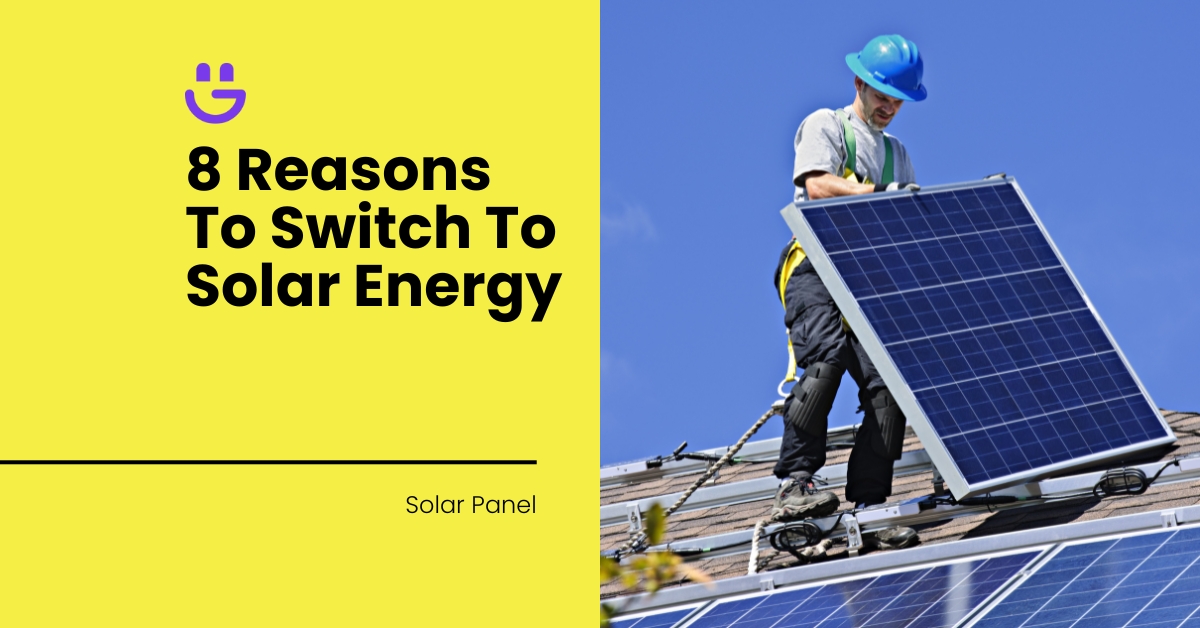Last Updated on November 14, 2025
As a general guide, you will need between 1,666 and 4,000 solar panels to generate 1 MW of electricity. The number of panels you need depends on several factors, including the wattage of the solar panels, sunlight conditions, and how much shade there is.
In this article, we’ll share a simple equation to determine the number of solar panels you need. We will also explore what can affect this estimation, such as weather patterns and where the solar power system is placed.
Contents
How to Calculate the Number of Solar Panels Needed for 1 Megawatt
To determine how many solar panels are needed to generate 1 megawatt, you can use a very simple equation.
Calculation
One megawatt consists of one million watts, so all you do is divide one million by the wattage of your solar panels:
1,000,000 / solar panel wattage = number of solar panels
- 250W output per panel = 4,000 panels needed
- 350W = 2,857
- 450W = 2,222
- 400W = 2,500
- 500W = 2,000
- 600W = 1,666
For 1 MW solar power systems, it is typical to use a bigger solar panel with a higher wattage (in the 400W – 600W range) because significantly fewer solar panels are required.
This is especially true if space to install the solar power plant is limited.
Factors That Influence Solar Panel Output Efficiency
While solar panel wattage is the biggest factor that influences how many solar panels you need, there are other various factors at play too.
Sunlight hours
A solar panel system requires an optimal amount of direct sunlight to work efficiently. This is measured in “peak sun hours” which occur when the sun is highest in the sky.
Four to six peak sun hours are considered best. The UK averages around three to four peak sun hours per day (more in the summer) which is enough to power a 1 MW solar array.
A solar panel will work when it’s cloudy, but it will be less efficient than on a clear day.
Temperature
Since a solar panel relies on the sun to gather energy, many people are often surprised to learn that they are negatively affected by hot temperatures.
In fact, a solar power system works best in cooler weather and will generally start to experience an efficiency reduction at temperatures above 25°C.
For monocrystalline solar cells, the efficiency drop ranges from -0.3% to -0.5% per degree Celsius. For example, at 35°C, the panels can drop by 2.7% to 4.5% in efficiency.
The UK’s average temperature is just under 10°C and days above 30°C are rare. While some hot days will negatively affect solar panel output, most of the time, they will work to their usual efficiency.
Solar inverter
Solar inverters convert direct current (DC) solar energy into alternating current (AC), which is used to power homes and businesses.
The efficiency of this conversion process directly impacts the overall efficiency of the solar power system. High-quality inverters have efficiency ratings of 95% to 98%.
However, poor-quality inverters or those not appropriately matched to the solar power system can result in significant energy losses, reducing the overall efficiency of the system.
Dirty and debris
Over time, solar panels accumulate dirt on their surface which hinders solar energy production. Dust particles, bird droppings, and grime create a barrier, preventing the light from being absorbed and reducing the amount of electricity produced. Check out our guide on how to protect your solar panels.
A 1 MW solar power plant may face this problem more frequently The large number of panels requires the system to be installed on the ground – in a field, for example – where there is a lot more dust and dirt.
Regular maintenance and cleaning is the solution to this problem. Eco Happy offers solar panel servicing and maintenance to keep your solar power system running optimally no matter where it is installed.
Angle and orientation
A solar power system works best when it is south-facing. For the best year-round performance, solar panels should also be tilted at an angle equal to the latitude of the installation site.
For example, if the ground has a latitude of 40 degrees, the panels should be tilted at a 40-degree angle. This ensures the maximum amount of solar energy is captured throughout the year.
It’s much easier to optimally position a ground-mounted 1 MW solar power plant, while a roof-mounted array is restricted by the pitch and position of the roof.
Solar arrays also work well in an east or west-facing position, but north-facing should be avoided.
Amount of shade
Shadows from trees, buildings, or other obstructions can significantly reduce the output of solar panels. Even partial shading on one panel in a series can affect the entire system’s performance.
For a 1 MW solar power facility, a wide open space, free of trees and large structures is best. This is why you often see solar power plants installed on farmland.
Age
A solar power system enjoys excellent longevity of over 25 years. However, as they age, the solar panels drop slightly in efficiency.
On average, the degradation rate of solar panels is about 0.5% to 1% per year. This means that after 25 years, a typical solar panel might operate at approximately 75% to 87.5% of its original efficiency rate.
Solar panel manufacturers usually provide warranties that guarantee a certain level of performance. For instance, a common warranty might state that the panel will still produce at least 80% of its rated power output after 25 years.
To understand this, check the warranty of the solar panel brand you are considering buying.
FAQs
How much land is needed for a 1 MW solar farm?
A 1 MW solar power typically requires between 4 – 5 acres of land, depending on how many solar panels there are. This includes space for all the solar equipment and racking, plus maintenance access and roads. Site-specific conditions, such as shading or obstacles, may increase the amount of land required.
How many homes can be powered by 1 MW of solar?
A 1 MW solar power plant can generate enough electricity for around 263 average UK homes.
How much does a 1 MW solar farm cost?
The cost to build a 1 MW solar power plant in the UK ranges from £2.5 million to £3 million, including all equipment, labour, and land preparation. The solar panels themselves account for up to £1.5 million of the total cost.
Final Thoughts
A 1 MW solar system will usually serve a local community’s or industrial-scale business’s power needs.
If you would like to understand how many solar panels you need for your home or business, we invite you to contact us, at Eco Happy, for a free quote. All you have to do is complete a simple form and we will get back to you with a cost estimate.
Find out how you can benefit from renewable energy with Eco Happy’s expert guidance and support. Get in touch for a friendly chat today.





Tom Allen
Solar Expert